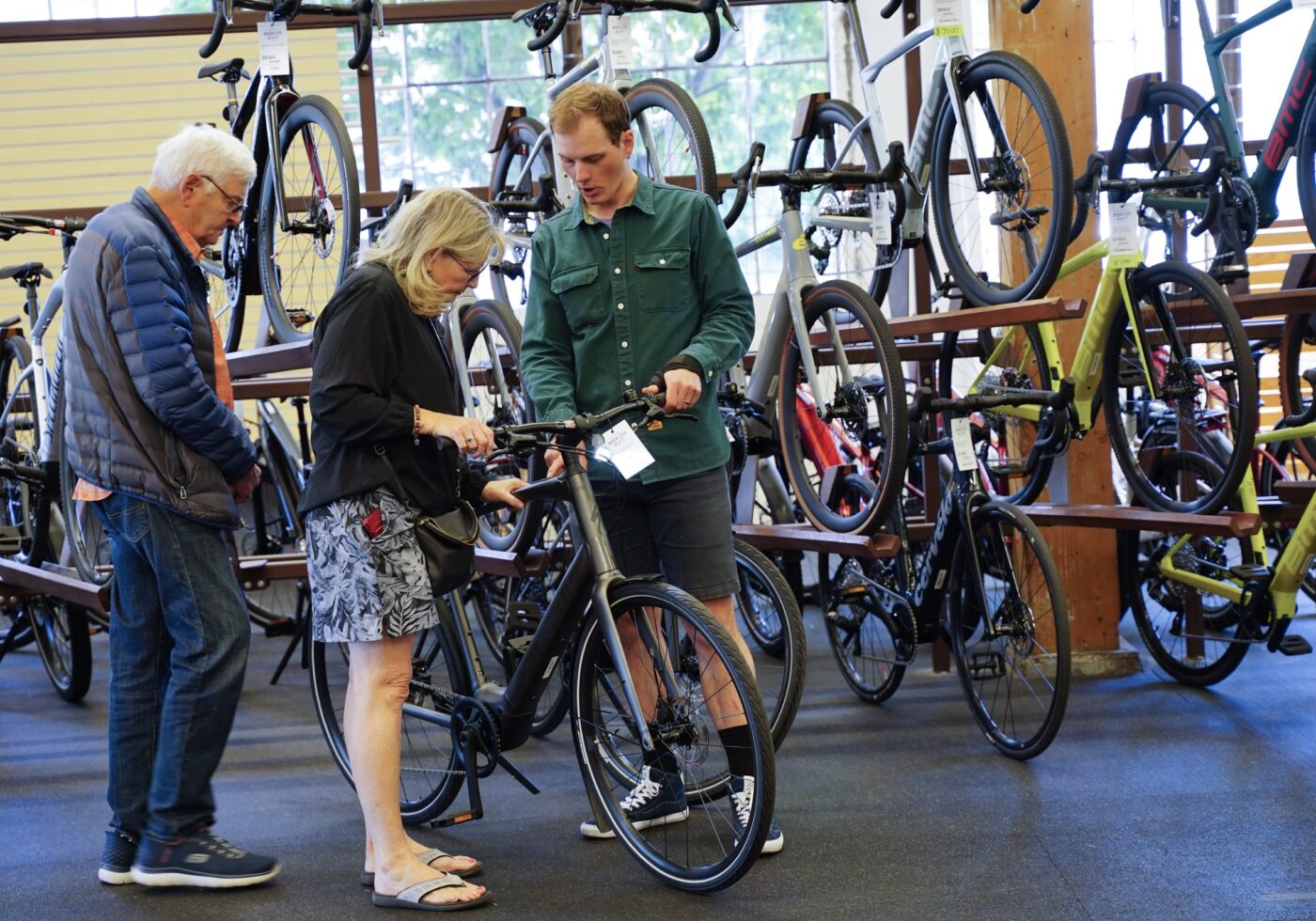The co-chairs of the Oregon Legislature’s Joint Committee on Transportation have released a “starting point” for negotiations around a major transportation funding bill. The Oregon Transportation Reinvestment Package (TRIP) seeks to raise about $1.9 billion per biennium (every two years) from a combination of increases to existing fees and taxes and a few new ones. Among them is a 63% increase to Oregon’s bicycle excise tax.
The Oregon Department of Transportation (ODOT) says the “structural revenue issues” they face — a drop in gas tax revenue, high inflation, and restrictions on available funding — have become so severe that they are $354 million short in their current budget. Without new funding this legislative session they’d have to fire nearly 1,000 employees and ODOT says the impacts to Oregon’s roads and people who use them would be “devastating.” Oregon last overhauled its transportation revenue programs in 2017, when lawmakers sought $5.3 billion in revenue over 10 years.
To avoid further cuts, ODOT and its oversight body, the Oregon Transportation Commission have spent two years building their case and garnering feedback from experts and road users. Last summer they organized a statewide tour of town hall-style listening sessions to hear and see first-hand what Oregonians want and need. All that discussion and feedback has brought us to this “starting point.”
Where the money will come from
Of the $2.2 billion funding total, the TRIP proposal (full text here) would raise $1.5 billion (note that all numbers in this story are per biennium, which means every two years, because that’s how ODOT budgets) through increases to the fuels tax and various vehicle registration fees. It seeks to raise the existing, 40-cents per gallon fuel tax to 60-cents per gallon. The 20-cent increase would begin with an eight cent increase in 2026 and would be staggered in four cent increments every two years through 2032. The TRIP also seeks to index the fuels tax to inflation, “to ensure future solvency of the revenue stream.”
The motor vehicle registration fee (currently starts at $126) would go up by $66 dollars and the cost of a title ($101) would go up $90. The weight-mile tax, paid by freight haulers and based on a percentage of the weight of their truck, would increase by 16.9%.
The TRIP also seeks to increase the existing Vehicle Privilege Tax (currently 0.5% of vehicle price) by 0.3% (for a total tax of 0.8%) and invest the funds into the Connect Oregon program that funds rail, aviation, and marine projects. (Revenue estimates are $44.8 million per biennium.)
The most significant new source of revenue in the package is what lawmakers are calling a “one-time system use fee” that would raise an estimated $486 million be levied on all vehicles at the time of purchase and be based on 1% of the sale price.
A new “tire pollution tax” would place a 3% increase on car and truck tire purchases (they say “vehicle tires” but “vehicle” can sometimes apply to bicycles and in this case they aren’t taxing bicycle tires) and is estimated to raise $50 million.
Another new revenue stream proposed in the package is a mandatory Road Usage Charge (RUC), also known as a pay-per-mile system. This would be a phased-in mandate that would apply to all existing electric cars in July 2026 and all new e-cars in 2027. It would hit plug-in hybrids in July 2028 and all new vehicles with 30 mile-per-gallon or greater in July 2029. Vehicle owners could enroll with the RUC program — which is already in place and known as OreGo — or pay a flat annual fee. (To learn more about this program, listen to a recent interview with ODOT’s finance director on Oregon Public Broadcasting.)
To fund transit, the TRIP would increase the payroll tax that funds ODOT’s Statewide Transportation Improvement Fund (STIF) from its current rate of 0.1% to 0.18%. This 0.08% would raise about $268.6 million. This increase is much lower than some lawmakers and transit advocates have asked for. In a letter sent March 28th to Oregon Senate and House leadership and members of the Joint Committee on Transportation, ten lawmakers asked for a 0.5% increase.
And last but not least, the TRIP proposes a 63% increase to the Bicycle Excise Tax. That $15 tax, which applies to new bicycles that sell for $200 or more, went into effect in 2018. Lawmakers want to add $9.50 per bike for a total new bike tax of $24.50 in order to raise about $1 million in revenue that would go directly toward ODOT’s Community Paths Program. Back in December I reported that some lawmakers felt it was a mistake to rush into the bike tax in 2017 and would seek to take a more nuanced approach this time around. So far, that’s not the case, and advocates have work to do on this front.
Where the money will go
As for how the funds will be distributed, about 90% of the newly proposed revenue would go into the State Highway Fund and be dedicated to maintenance and operations of the existing system.
Of the $1.9 billion the package raises from the fuel tax and vehicle registration fee increases, $1.7 billion of that will be distributed via the traditional “50/30/20” State Highway Fund formula that sends 50% of revenue to the state (about $850 million), 30% to counties (about $510 million) and 20% (about $340 million) to cities.
$250 million of the new one-time system use fee will be set-aside and spent on finishing highway expansion projects identified but not yet completed in the 2017 package (known as House Bill (HB) 2017. This is the “unfinished business” lawmakers have been talking about and includes megaprojects like the I-5 Rose Quarter, the Abernethy Bridge project, and so on. One source referred to this as a ” freeway project slush fund.”
While the TRIP dedicates $125 million per year to highway expansion projects, it makes no such promise for ODOT’s complete streets or Safe Routes to Schools programs. The package mentions those programs but does not specify any funding amount for them.
When it comes to passenger rail, the package would send $17 million to maintain Amtrak service levels. Half of the tire pollution tax revenue (about $25 million) will go to rail operations. The tire tax will also fund wildlife crossings and salmon restoration efforts to, “negate the harmful impacts of pollution runoff into Oregon waterways.”
Advocates with Move Oregon Forward (a coalition of climate, transportation safety, and environmental justice nonprofits) applauded the framework released today, saying it “provides a solid foundation.” Executive Director of The Street Trust Sarah Iannarone said, “We deeply appreciate the mentions of key safety programs.” Cassie Wilson, the transportation policy manager at 1000 Friends of Oregon, was a bit more pointed. “The money must match the mission,” Wilson said, referring to transit funding. “Now is the time to double down on popular but underfunded programs that benefit all Oregonians now and in the long term.”
With these proposals finally out in the open, the debates can start in earnest. This is just an opening salvo and it’s widely understood that what ends up being passed will be very different that what we have now. What parts change and how much they change depends on who’s able to influence lawmakers the most and bend the politics in their favor.
Stay tuned for more coverage and analysis. Read the text of the proposal here.





